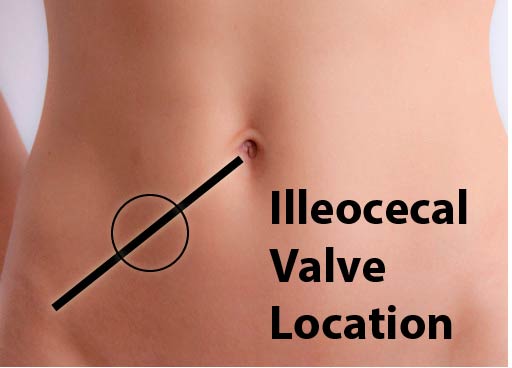Stay Informed
Popular Articles
- Hiatal Hernia: Hidden Cause of Chronic Illness
- Small Intestinal Bacterial Overgrowth (SIBO)
- Applied Lymphology: Unlocking the Secret to Pain Relief
- An Introduction to Constitutional Iridology
- The Low Down on Liver Detoxification
- An Energetic and Emotional Approach to Cancer
- Fat Facts
- Marrow in the Bones
- Blood Type and Nutrition
- Cardiac Herbs: Beyond Hawthorn
Quick Search
The School of Modern Herbal Medicine




Natural Therapy for SIBO
- 5/31/2013
- Categorized in: Specific Health Problems

Here are seven things you can do to overcome SIBO. Many of these things are also done for leaky gut.
Step One: Remove food and chemical irritants
Dietary adjustments are essential to overcoming both SIBO and leaky gut. It is absolutely essential to eliminate all refined sugars from the diet and most starchy foods. At the least one should eliminate all grains containing gluten (wheat, rye, barley), but eliminating all grains may be required.
Dairy may also be problematic because the bacteria love to feast on the sugar in dairy, lactose. . Goat milk products and cultured dairy foods can be beneficial for some people, yet other people may have to eliminate all dairy foods.
Fermented foods are generally helpful for SIBO. These are discussed under Step Six: Restore beneficial bacteria.
There are three dietary programs that may be helpful, depending on the severity of the problem. These are the Specific Carbohydrate Diet (SCD), the Gut and Psychology Syndrome (GAPS) diet and the Paleo diet. Resources on all three of these diets can be found at the end of this article. These diets are also discussed in a webinar we did on this topic, which will be available for purchase on this website.
Step Two: Stimulate production of and/or supplement stomach acid and enzymes
There are two ways to increase stomach acid and enzymes. One is to take supplements and the other is to take herbs and nutrients that stimulate their production. With SIBO it is normally necessary to do both.
To determine how much Betaine HCl one needs you can do a hydrochloric acid challenge test. Note: do not perform this test if you have an active ulcer or a history of ulcers.
To do the test, take a 400-500 mg. capsule of Bentaine HCl with pepsin prior to a meal. If you notice no burning, you increase to two capsules the next meal. Proceed until you notice a mild burning sensation, then immediately reduce your dose to the number of capsules that preceded the burning or heat sensation. Most people find a comfortable dose between 400 and 1500 mg per meal (2-3 capsules).
If one or two capsules causes burning, you either don’t have low stomach acid or your reflux is so severe that you won’t be able to take HCL until you get it under control. Also, remember that the more protein you eat at a meal, the greater the need for HCl, so you can vary the dose with the size and content of your meals. Also, if you have severe digestive problems, you may also wish to take a complete food enzyme that has HCl and pancreatic enzymes.
Within 3-6 months most people feel a warmth in their stomach with the same dose they have been taking. When this happens it is time to decrease your dose and start weaning off of Betaine HCl.
You can also use digestive bitters to stimulate digestive secretions. Bitters not only stimulate HCl secretion, they also stimulate pancreatic enzymes and bile from the gallbladder and tend to be mildly antibacterial as well. Bitters should be taken 15-20 minutes prior to meals with one to two large glasses of water. A small pinch of a natural salt can also be taken at the same time, as this also helps stimulate HCl production by providing chloride.
Digestive bitters formulas to consider include:
- Angostura bitters
- Swedish Bitters (Gaia)
- Organic Bitters (Urban Moonshine)
- Digestive Bitters (Herb Pharm)
- Bitters Compound (Herbalist & Alchemist,)
- Digestive Grape Bitters (Planetary Formulas)
Bitters are contraindicated if you have digestive atrophy. So, if you have dry mucus membranes, as evidenced by a dry and withered (or shriveled) looking tongue, don’t take bitters as they dry the mucus membranes.
A lack of HCl may also be due to a lack of the following nutrients: chloride (low serum levels), zinc and thiamine. These are primary nutritional factors required for the synthesis of hydrochloric acid.
Step Three: Improve intestinal motility (if necessary)
With SIBO it is also important to make certain that there is good intestinal motility between meals to flush the intestines and clear out bacteria. One way to do this is to allow adequate time between meals. Depending on the efficiency of your digestion, you need three and five hour between meals. Ideally, you should wait until you get stomach rumblings indicating your digestive tract is clear before eating the next meal.
If motility is slow there are some supplements that may be helpful. All carminatives increase digestive motility, and many people find that a cup of ginger tea is most helpful. You can also try taking 100 mg of 5-HTP twice daily or MotilPro from Pure Encapsulations (two capsules twice daily). If improvement isn’t noted after two weeks, add 6 mg. of melatonin before bed and three capsules of Methyl Guard (Thorne) twice daily.
Step Four: Close the ileocecal valve (if necessary)
 If there is severe gas and bloating, you probably need to work on the ileocecal valve. This is done by massaging the valve to reduce swelling and inflammation and get it to close properly. The ileocecal valve is located on the lower right side of the abdomen, midway between the belly button and the right hip bones as illustrated. Check the circled area shown in the picture to see if there is any swelling or tenderness in that area. If there is, massage the area a couple of times a day until the swelling and tenderness go away.
If there is severe gas and bloating, you probably need to work on the ileocecal valve. This is done by massaging the valve to reduce swelling and inflammation and get it to close properly. The ileocecal valve is located on the lower right side of the abdomen, midway between the belly button and the right hip bones as illustrated. Check the circled area shown in the picture to see if there is any swelling or tenderness in that area. If there is, massage the area a couple of times a day until the swelling and tenderness go away.
This is demonstrated in Steven’s video on techniques for self-correction of a hiatal hernia.
Step Five: Reduce bacterial overgrowth
If a person has signs of SIBO, they will need to take some supplements to reduce bacterial overgrowth in the small intestines. This can be done with pharmaceutical antibiotics or herbal antibacterial agents.
For starters, one can take a digestive bitters blend with antibacterial herbs in it, instead of just plain digestive bitters. Here are a few examples:
- AF Compound (Herbalist & Alchemist)
- Fungus Fighter Compound (Herb Pharm)
- Wormwood, Black Walnut Supreme (Gaia)
Another great remedy is enteric coated peppermint oil. Take one capsule with three meals each day for about 20 days. In clinical trials this was shown to cause a 25-50% reduction in small intestinal bacteria.
Garlic is another possible antimicrobial agent, but if friendly lacto bacteria are overpopulating the small intestines, it won’t work. It does kill gram negative bacteria. The best way to take it is to chop up or crush fresh garlic, then mix it with a teaspoon of honey to make it easier to take. Encapsulated garlic products are generally ineffective.
Cinnamon kills both lactic acid bacteria and yeast. It is much more active than peppermint. Use it when you are sensitive to taking probiotics. Take two capsules three times daily with meals.
Goldenseal may also be helpful. It not only reduces intestinal bacteria, it also tones up digestive membranes and reduces irritation. It does lower blood sugar levels, however. Take two capsules three times daily with meals.
Note: It is not necessary to take ALL of the above remedies. That would be overkill. Pick one or two only, depending on your circumstances and what’s available to you.
Step Six: Restore beneficial bacteria
All traditional cultures used some kind of cultured foods. Vegetables were commonly cultured, but so were fruits and dairy foods. Studies have shown that it takes 10 billion encapsulated bacteria to obtain the same value to the intestines that just 100 million bacteria from food will do. Furthermore, people with SIBO often do not do well on probiotic supplements, especially if they contain prebiotics which feed the small intestinal bacteria as well as friendly flora. The most well tolerated probiotic supplements are: Klaire labs Ther-biotic Complete, BioKult and Align.
Cultured vegetables are very valuable in treating SIBO and leaky gut. You can make your own cultured vegetables or you can purchase them from a health food store or some supermarkets. Here are some brands of naturally fermented vegetables:
- Bubbies
- It’s Alive
- King Asian Gourmet
- Dear Garden
- Pleasant Valley Farms
- Wild Brine
Making your own cultured vegetables is quite easy. Recipes for making cultured vegetables can be found in the materials from our Leaky Gut and SIBO webinar, online or from the book Nourishing Traditions by Sally Fallon.
After eliminating dairy for six weeks, you can try slowly reintroducing cultured dairy products like yogurt and kefier and see if you tolerate them. Beyond Organic makes a cultured dairy beverage with over 30 probiotics in it called Amasi. It is made from milk free of A1 Beta-Casein.
Step Seven: Repair gut integrity
Since SIBO always causes leaky gut, it is important to rebuild the integrity of the intestinal membranes. One of the best ways to do this is by using bone broth. Bone broth is high in glutamine and glycine, both of which are essential in healing the gut. They are emphasized in both the SCD and GAPS diet. Drink 1-4 cups of bone broth daily. You can also use it to make soups. Recipes for bone broth can be found online or in Nourishing Traditions.
If you can’t take the bone broth, you can use l-glutamine, which can also be used along with bone broth. The best way to take it is to get l-glutamine powder and take 1 teaspoon three times daily mixed with food. Other remedies that help heal the gut include chamomile tea (one cup three times daily), deglycyrrhizinated licorice (2 capsules three times daily) and colostrum powder (Total Body Research Labs), one teaspoon twice daily. Kudzu/St. John’s wort and Spleen Activator from Nature’s Sunshine Products can also be helpful.
